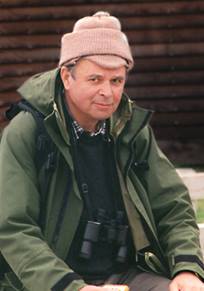 For more than three decades, Brin's dedication and passion for teaching inspired students at every level of their geological education
For more than three decades, Brin's dedication and passion for teaching inspired students at every level of their geological education
Brin Roberts died at the age of 86 at his home in Kent on 14th June 2018 after a short illness. A celebration of his life on 4th July brought together his family, friends and former colleagues and students. Tributes to his life were presented at the celebration and were also contributed as messages. Many spoke of Brin’s gift for teaching geology, both in the lecture theatre and in the field.
Brin began his career in geology as a junior member of the teaching staff in the Geology Department at Birkbeck College in the early 1960s. After he completed his PhD thesis, on the Llwyd Mawr syncline in North Wales, he continued to focus his research on the Lower Palaeozoic basin of Wales. His book The Geology of Snowdonia and Llyn, published in 1979, was the first truly comprehensive account of a region that was becoming increasingly popular for a range of outdoor activities. The work for his book led to a career-long interest in the tectonic history of the Welsh Basin. He shifted his research from the regional to the microscopic scale with a study of indicator minerals in very low-grade metabasic rocks in North Wales. In the 1980s, I joined Brin to study metabasite mineral facies and illite crystallinity in metapelitic rocks in Snowdonia.
The study of illite crystallinity received a major boost in 1987 with an invitation to work with Professor Don Peacor at the University of Michigan, and use his state-of-the-art Transmission Electron Microscope (TEM). We made direct measurements of the size of a population of illite crystals, and compared the TEM sizes with those calculated from X-ray diffraction (XRD) data. In 1992, Don Peacor was awarded a NATO study grant that allowed Brin and myself to continue research at the University of Michigan well into the 1990s. As a result of our collaboration with Don and his research team, illite crystallinity became widely accepted as an index of very low-grade metamorphism.
Through the 1980s and 1990s, Brin developed his interest in Lower Palaeozoic basin history with a series of regional studies, in collaboration with the British Geological Survey. Using metamorphic-zone-contouring techniques integrated with stratigraphic and tectonic data, he was able to reveal cryptic thermal aureoles and high-strain zones, as well as patterns of inverted metamorphism previously undetected by earlier surveys of the Scottish Southern Uplands terrane, which he showed are a characteristic of subduction zones.
An unusual mixed-layer clay mineral was found in a metabentonite sampled by Brin Roberts close to Bangor, North Wales. Detailed investigation by members of Don Peacor’s research group proved it to be a new mineral species that was subsequently named after Brin
1. The name brinrobertsite is a fitting dedication to a man who contributed so much to the teaching and application of geological knowledge.
Brin is survived by his wife, Jan, two children, Jane and Geraint, from his first wife, Rita, and five grandchildren.
By Dick Merriman
1. Dong, H., Peacor, D.R., Merriman, R.J. & Kemp, S.J. 2002. Brinrobertsite: a new R1 interstratified pyrophyllite/smectite-like clay mineral: characterization and geological origin. Mineralogical Magazine, 66, pp 605-617.